Intro to genomic testing
Learn about the concepts of Genomic Testing.
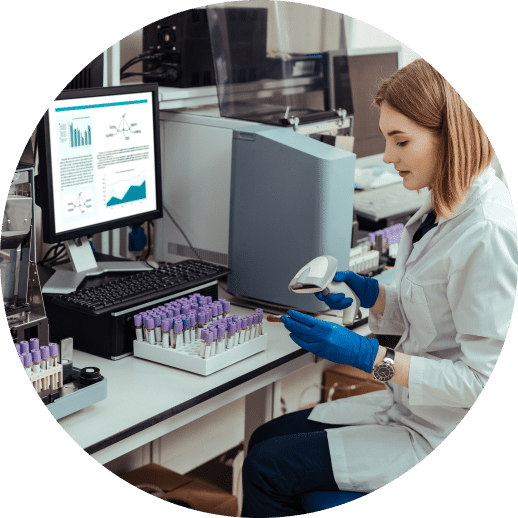
What is DNA?
DNA is a chemical that contains our genetic information. It is a long molecule made up of four different chemicals, or bases, represented by the letters A, T, C and G. These bases form long strings which twist around each other to give the characteristic double helix shape.
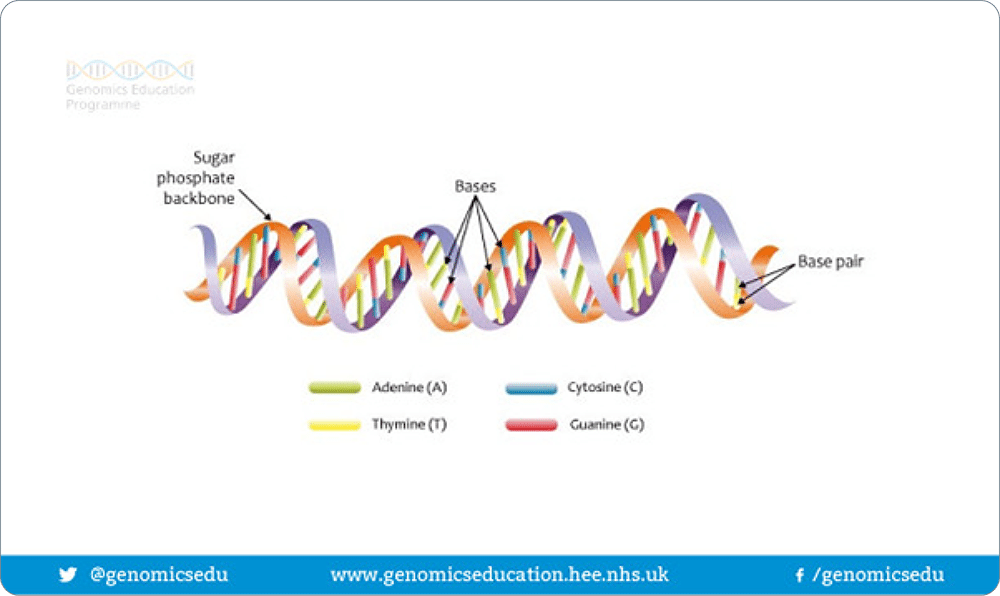
As well as being helix-shaped, DNA is tightly packed so it takes up less space. If you stretched the DNA in one cell all the way out, it would be about 2 metres long.
The information encoded within DNA contains the instructions for making and maintaining you.
If you are unsure about any of the terms used, please see this A-Z Genomics glossary.
What is a chromosome?
Long strings of DNA combine together in pairs which we call chromosomes. Chromosomes are tightly packed in the nucleus of each of our cells. Each human cell usually contains 23 pairs of chromosomes meaning that we have two copies of each gene, one copy inherited from each parent.
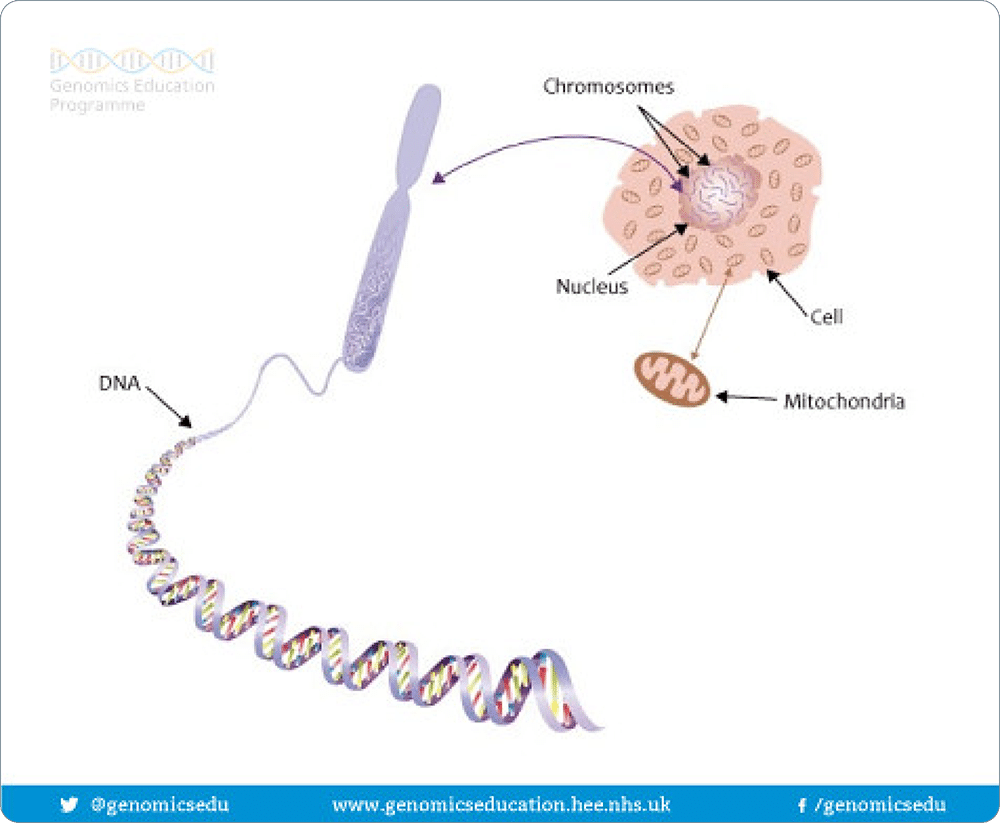
What is a genome?
Your genome is all 3.2 billion letters of your DNA. It contains around 20,000 genes. A gene is made up of a short sequence of DNA which contains a code made up of chemical letters. This code instructs the cell which amino acids to piece together to make a protein. Genes are the instructions for making the different components of our bodies – from the keratin in hair and fingernails to the antibody proteins that fight infection.
Genes make up about 1-5% of your genome. The rest of the DNA, between the genes, is important for controlling the genes. For example, it can switch genes on and off at the right time.
We share over 99% of our genome with other people, but that still leaves more than 3 million differences between us.
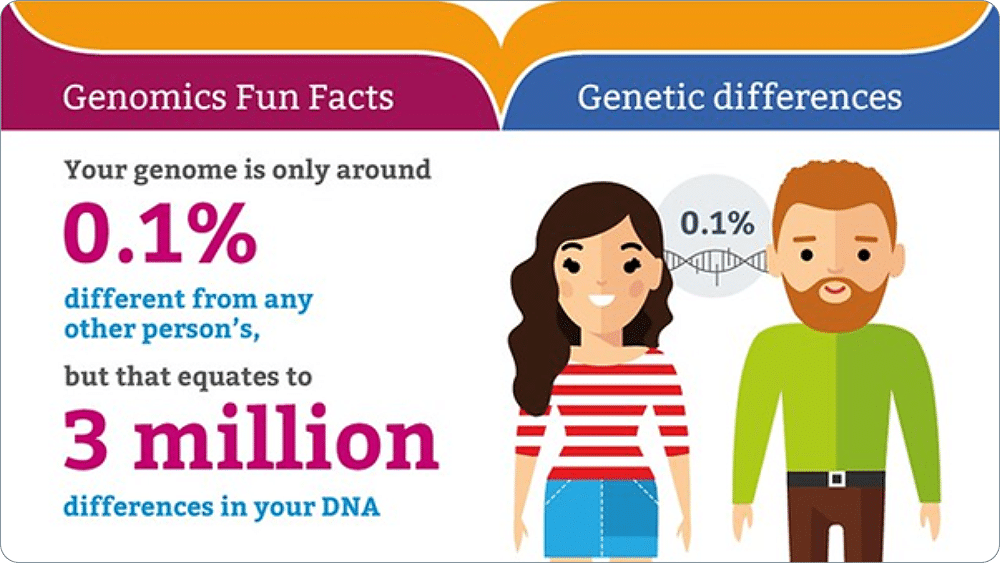
Many of these differences in our DNA, known as variants, have no effect, but there are some variants that can affect our health.Many of these differences in our DNA, known as variants, have no impact, but there are some that can affect our health.
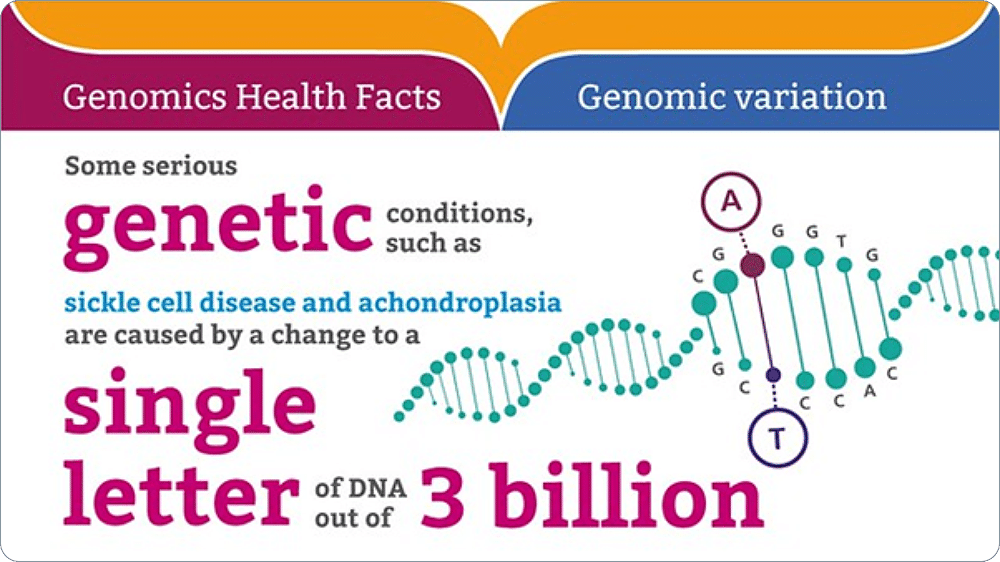
What is the difference between genetics and genomics?
Genetics is the study of genes and their roles in inheritance – in other words, the way that certain traits or conditions are passed down in the genes from one generation to the next. In healthcare, genetics has typically focused on variations in a single gene when determining the cause of a health condition.
Genomics is an all-encompassing term that takes into account all the DNA in a person’s or organism’s genome – both the genes that code for proteins and the non-coding regions. It looks at how genes are expressed and the interplay between different genes.
What is genome sequencing?
Sequencing is a technique that is used to ‘read’ DNA. It finds the order of the letters of DNA (A, T, C and G), one by one, and therefore enables us to find the sequence of someone’s unique 3 billion letters of DNA.
The team at Great Ormond Street Hospital have developed two short videos explaining what a genome sequence is and what happens when a genome is sequenced. If you can’t access YouTube, try watching on Vimeo here and here.
- Versions of these videos with Turkish sub-titles can also be found here and here (Bu videoların Türkçe çevirileri olan versiyonlarına burada ve burada da bulunabilir).
- Versions of these videos with Bengali sub-titles can also be found here and here (bangla anubadshah ei videor sanskaranakhan and akhane pawa zabe, বাংলা অনুবাদসহ এই ভিডিওর সংস্করণএখানে ও এখানে পাওয়া যাবে)
- Versions of these videos translated into Simplified Chinese can be found here and here (这些视频翻译成简体中文的版本可以在这里找到, zhè xiē shì pín fān yì chéng jiǎn tǐ zhōng wén de bǎn běn kě yǐ zài zhè lǐ zhǎo dào)
- Versions of these videos translated into Traditional Chinese can be found here and here (這些視訊翻譯成傳統中文的版本可以在這裡找到, zhè xiē shì pín fān yì chéng chuán tǒng zhōng wén de bǎn běn kě yǐ zài zhè lǐ zhǎo dào)
Whole genome sequencing
Whole genome sequencing allows us to read the DNA sequence of an entire genome.
Watch the animation below to find out more.
English
Bengali
Gujarati